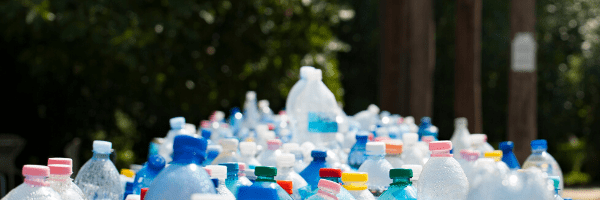Is estrogen good or bad? Should you take it or avoid it? Are estrogens a concern for men as well as women? The answer depends in part on the type of estrogen. Estrogen is the main female hormone, causing breast development, monthly menstrual cycles, the shape of a woman’s body, and much more. We are exposed to many different estrogens, not only what we make in our bodies, but also those which are made in nature and industry. The types of estrogens not made in our bodies include phytoestrogens, mycoestrogens and xenoestrogens.
The plant form of estrogen is known as phytoestrogen. Often referred to as “dietary estrogens,” phytoestrogens are present in such foods as linseed (flax), soy products, legumes and yams. Many over-the-counter menopause remedies such as soy and red clover contain phytoestrogens, also known as isoflavones. These are generally accepted as safe for women, and we have patients who find them helpful, but the data supporting their benefit for menopausal symptoms such as hot flashes is limited.
However, it is felt that the “weak” estrogens found in phytoestrogens play a protective role in our bodies, and a 2009 study in the Journal of the American Medical Association confirms that “among women with breast cancer, soy food consumption was significantly associated with decreased risk of death and recurrence.” Another 2009 study which included over 70,000 women, from the American Journal of Clinical Nutrition, showed that “women who consumed a high amount of soy foods consistently during adolescence and adulthood had a substantially reduced risk of breast cancer.”
Mycoestrogens are also a natural form of estrogen, made from fungi (i.e. mushrooms). Mycoestrogens do not appear to have effects on humans but a toxin they produce called “mycotoxin” has been harmful to certain types of livestock and may produce allergy reactions in humans.
What are Xenoestrogens?
Xenoestrogens are “foreign estrogens” that are industrially made compounds. They differ in their chemical structure from naturally occurring estrogens but they can act like estrogen in the body of both women and men. Unlike the phytoestrogens, evidence suggests that xenoestrogens are harmful to human health.
Xenoestrogens have been introduced into the environment by many industrial, agricultural and chemical companies, and are found in foods, drugs, cosmetics, insecticides, herbicides, plastics, oils, paints and adhesives. Although the environmental effects of xenoestrogens are a concern, your greatest exposure may be from common products in foods, food containers and personal care products. Just a few examples include:
- Butylated hydroxyanisole, BHA (food preservative)
- Erythrosine (food coloring FD&C Red No. 3)
- Bisphenol A, BPA (polycarbonate plastic denoted as #7, #3 or PC on the recycling symbol)
- Polychlorinated biphenyls, PCBs (electrical oils, lubricants, adhesives, paints)
- Ethinylestradiol (birth control products)
- 4- Methylbenyzlidene camphor, 4-MBC (sunscreen lotions)
- Parabens, commonly known as methylparaben, ethylparaben, propylparaben and butylparaben (cosmetics, lotions and shampoos)
We have seen some amazing cases of hormonal imbalance in which reducing exposure to xenoestrogens has proven to be the remedy. For example, if you are a woman with signs of “estrogen dominant” menstrual cycles, which includes symptoms such as PMS, water retention, tender breasts, or heavy painful menses, then you should try eliminating your exposure to xenoestrogens. If that does not help then you might have a hormone imbalance such as low thyroid or low progesterone.
Avoiding Xenoestrogens
Avoiding xenoestrogens can be achieved through reading labels and being aware of what you are buying. Many cosmetics are now labeled “paraben free.” You may notice plastic containers stating they are “BPA free.” You can also look for food and beverage containers that have the recycling number “1” or “2” in addition to looking for glass and stainless steel alternatives to plastic. It may also be a good idea to go through your pantry and kitchen drawers looking for unwanted plastic containers. As a rule, never heat Styrofoam or any plastics in the microwave.
It is good practice to read all food labels. When I see ingredient lists that look like “paragraphs” then that food does not go into my basket. Avoid processed and pre-packaged foods when you can. If you look for fresh, preferably organic fruits, vegetables, and natural meats, you will not only be avoiding xenoestrogens but will also have the bonus of choosing a healthier diet.
To help the body get rid of xenoestrogens, start with a healthy diet and healthy gut, for this is the start of detox in general. Supplements such as Indole-3-Carbinole (I3C) or better yet, diindolylmethane (DIM) improve estrogen elimination. Myomin is a great herbal product that selectively blocks estrogen receptors, similar to phytoestrogens, and also blocks excess production of estrogen.
In our practice, when estrogen or other hormone replacement is necessary, we use only bioidentical hormones, which simply means they are 100% identical to the naturally occurring biological form of the hormones found in our bodies. These are made from natural sources such as soy or yams. If you are experiencing hormone decline such as menopause or andropause (male menopause), or hormone imbalances, we recommend bioidentical hormones for replacement.
Author
Scott Rollins, MD, is Board Certified with the American Board of Family Practice and the American Board of Anti-Aging and Regenerative Medicine. He specializes in bioidentical hormone replacement for men and women, thyroid and adrenal disorders, fibromyalgia and other complex medical conditions. He is founder and medical director of the Integrative Medicine Center of Western Colorado (www.imcwc.com) and Bellezza Laser Aesthetics (www.bellezzalaser.com). Call (970) 245-6911 for an appointment or more information.


